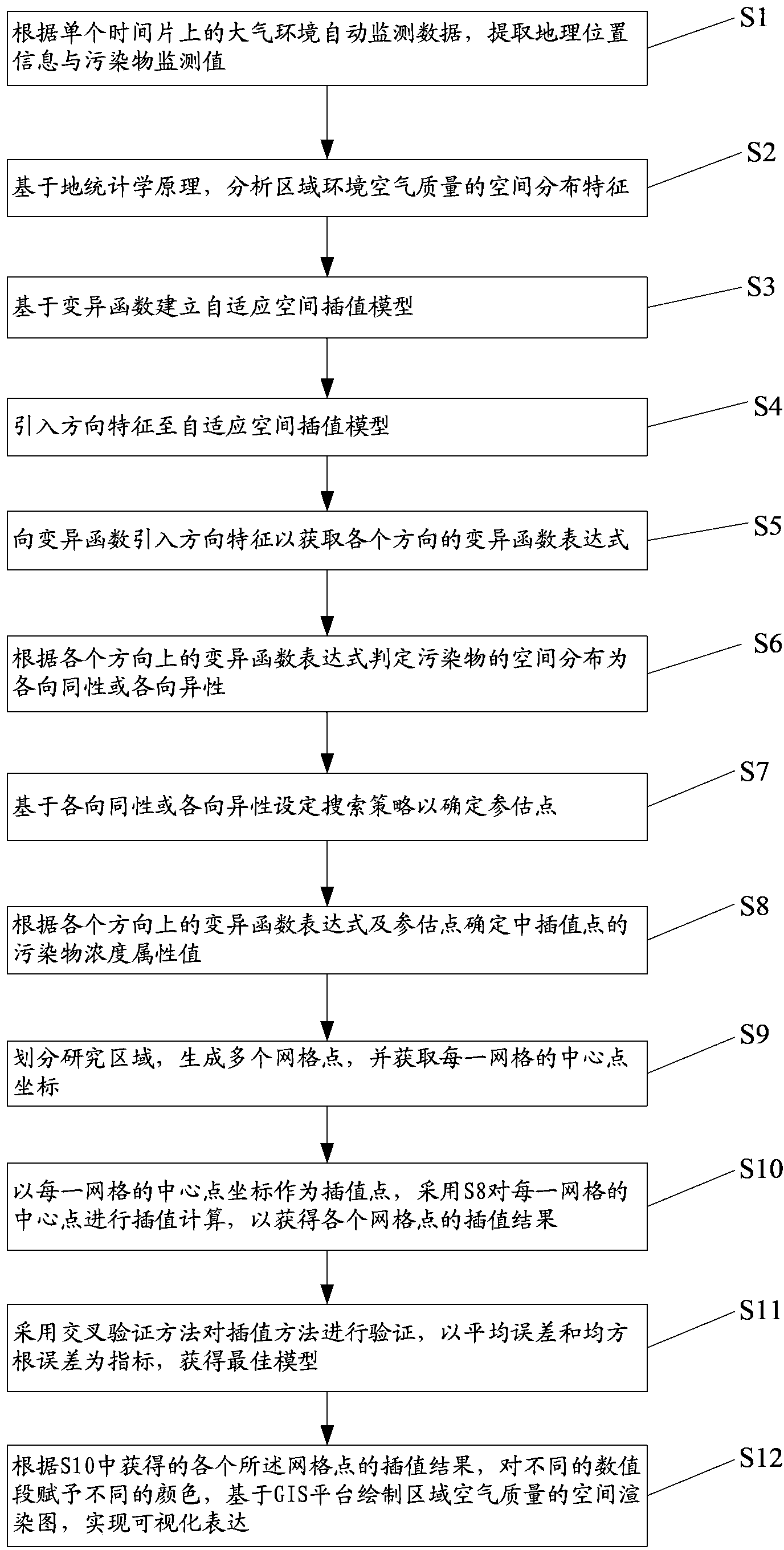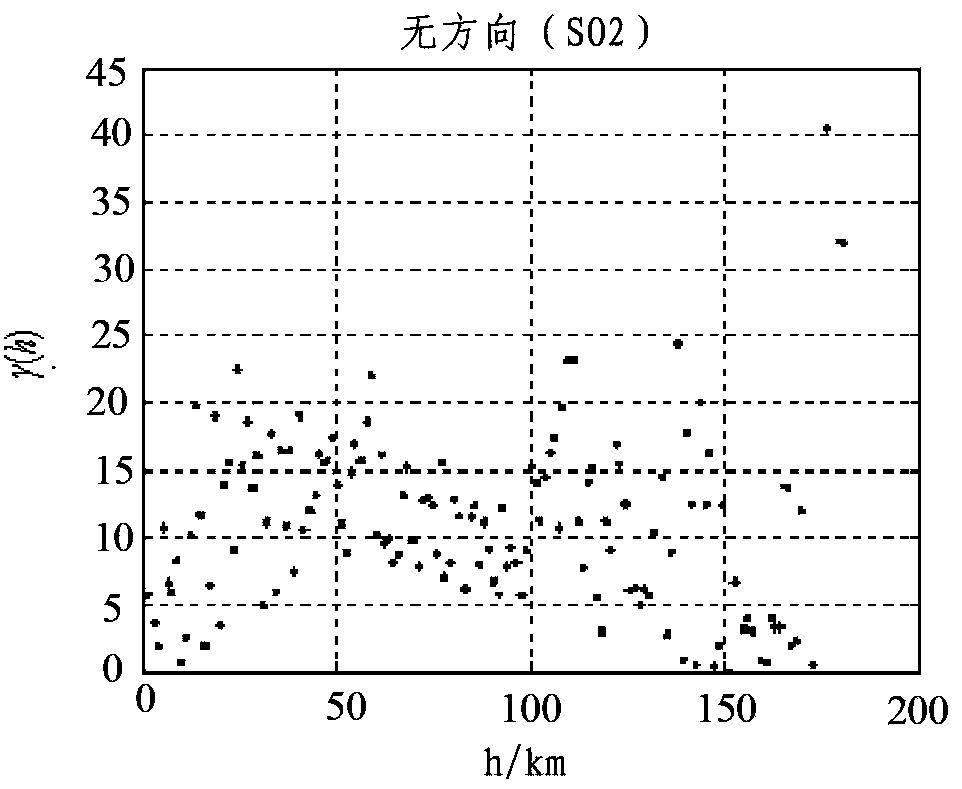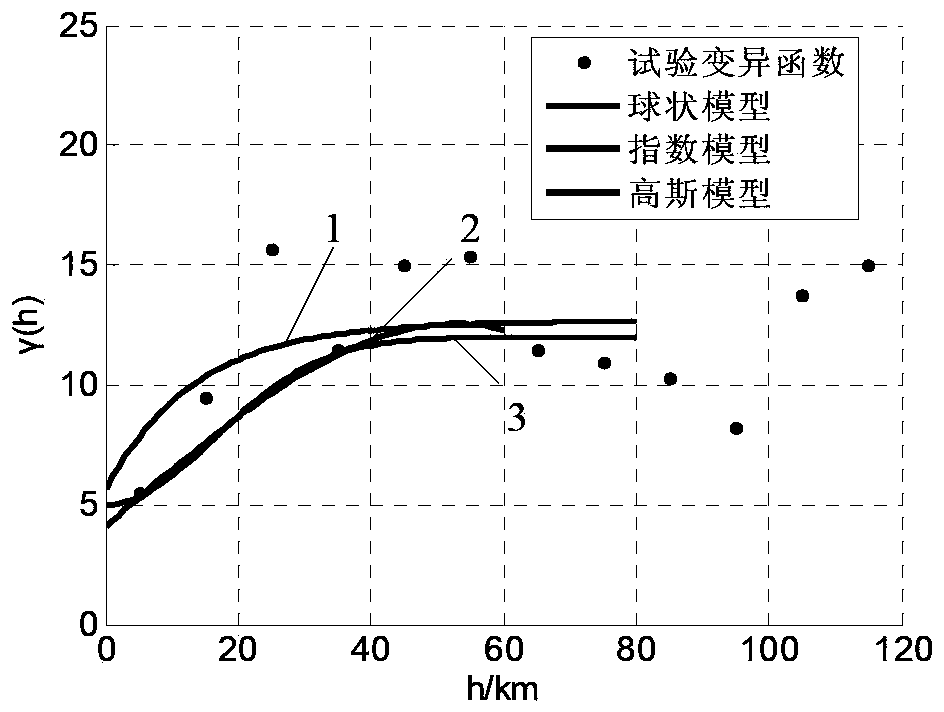Self-adaption spatial interpolation method and system based on spatial feature analysis
A spatial interpolation and adaptive technology, applied in special data processing applications, instruments, electrical digital data processing, etc., can solve the problems of slow interpolation, low interpolation accuracy, low interpolation accuracy, etc., to achieve accurate prediction, improve interpolation accuracy, Inexpensive effect
- Summary
- Abstract
- Description
- Claims
- Application Information
AI Technical Summary
Problems solved by technology
Method used
Image
Examples
Embodiment Construction
[0048] Embodiments of the present invention will now be described with reference to the drawings, in which like reference numerals represent like elements.
[0049] Please refer to figure 1 , the present invention's adaptive spatial interpolation method based on spatial feature analysis comprises the following steps:
[0050] S1: Based on the automatic monitoring data of the atmospheric environment on a single time slice, extract geographic location information and pollutant monitoring values, where the geographic location information and pollutant monitoring values need to be in one-to-one correspondence; specifically, the Pearl River Delta on August 24, 2012 Region 62 Sites SO 2 Taking the monitoring data as an example, first extract the geographic location information and SO of 62 stations 2 Concentration information, using MATLAB software, using x, y, z coordinates to represent the longitude, latitude and pollutant concentration data of each station, as follows:
[00...
PUM
 Login to View More
Login to View More Abstract
Description
Claims
Application Information
 Login to View More
Login to View More - R&D
- Intellectual Property
- Life Sciences
- Materials
- Tech Scout
- Unparalleled Data Quality
- Higher Quality Content
- 60% Fewer Hallucinations
Browse by: Latest US Patents, China's latest patents, Technical Efficacy Thesaurus, Application Domain, Technology Topic, Popular Technical Reports.
© 2025 PatSnap. All rights reserved.Legal|Privacy policy|Modern Slavery Act Transparency Statement|Sitemap|About US| Contact US: help@patsnap.com



